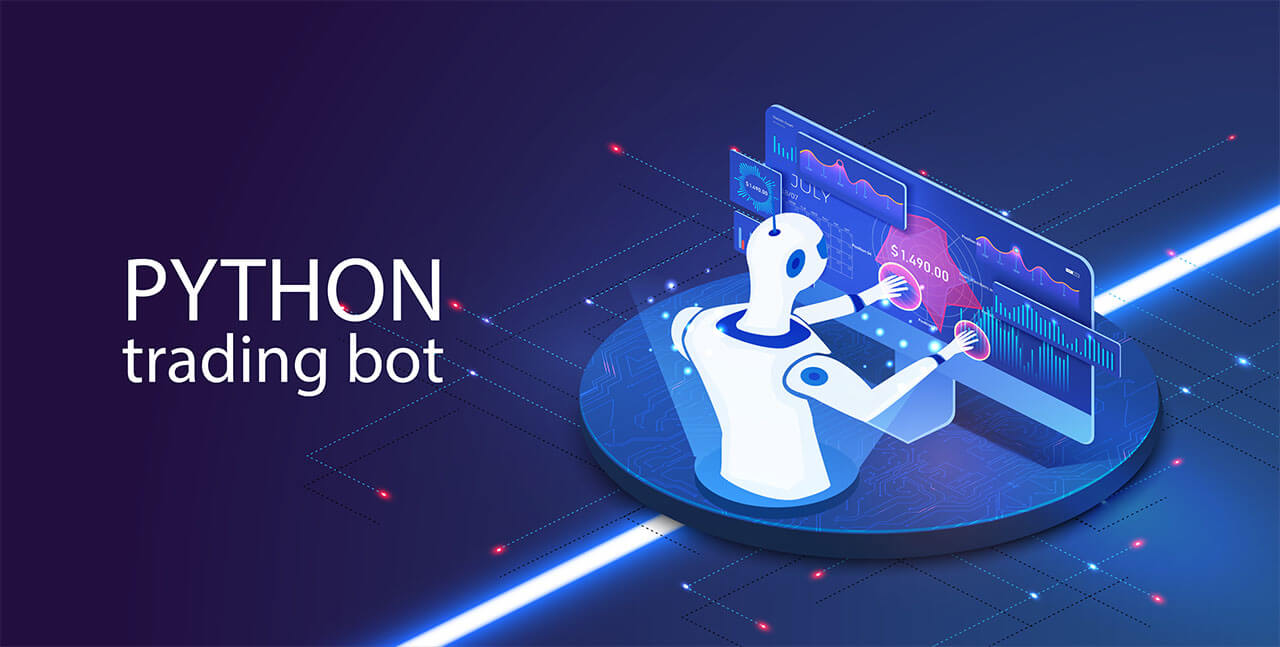What are Trading Bots and How Do They Work?
Trading bots are software programs designed to automate financial trading strategies in various markets, including forex, stocks, commodities, and cryptocurrencies. These bots analyze market conditions, identify trading opportunities, and execute trades based on predefined rules and algorithms. The primary benefits of automating trading strategies include faster execution times, reduced emotional decision-making, and the ability to operate continuously without breaks.
Backtesting plays a crucial role in enhancing the performance of trading bots. By using historical data, traders can simulate trades and assess the effectiveness of their strategies. This process helps identify potential weaknesses, optimize parameters, and minimize risks before deploying the bot in live markets. Consequently, designing, backtesting, and executing trading bots is essential for traders seeking to maximize their returns and minimize potential losses.

Designing a Robust Trading Bot Strategy
Designing a successful trading bot strategy involves several essential elements, including market analysis, risk management, and selecting appropriate trading algorithms. Market analysis involves understanding the underlying market dynamics, trends, and patterns. Risk management focuses on minimizing potential losses and protecting capital by setting stop-loss orders, diversifying investments, and allocating resources wisely.
Selecting the right trading algorithms is crucial for a bot’s success. Popular strategies include momentum, mean reversion, and trend following. Momentum strategies involve buying assets with strong upward trends and selling those with downward trends. Mean reversion strategies assume that asset prices will eventually return to their historical averages. Trend-following strategies involve identifying and following market trends to capitalize on price movements.
When designing a trading bot strategy, it’s essential to consider factors like time frames, entry and exit rules, and position sizing. Time frames can range from minutes to months, depending on the trader’s preferences and objectives. Entry and exit rules define when to enter and exit trades, while position sizing determines how much capital to allocate to each trade. Balancing these factors is crucial for achieving consistent returns and managing risk effectively.
Backtesting Your Trading Bot Strategy
Backtesting is a crucial step in evaluating the effectiveness of a trading bot strategy. It involves using historical data to simulate trades and assess the performance of the strategy. By simulating trades, you can identify potential weaknesses, strengths, and areas for improvement in your strategy before deploying it in live markets. This process helps minimize risks, optimize performance, and enhance overall trading results.
To backtest a trading bot strategy, you need historical data that covers the time frame and assets you’re interested in. This data should include information like open, high, low, close (OHLC) prices, trading volumes, and other relevant market indicators. Once you have the data, you can set up a testing environment using backtesting software or platforms that support automated trading strategies.
When backtesting, it’s essential to consider factors like slippage and transaction costs, which can impact the overall performance of your strategy. Slippage refers to the difference between the expected price of a trade and the actual price at which the trade is executed. Transaction costs include fees, commissions, and other charges associated with trading. By accounting for these factors, you can get a more accurate picture of your strategy’s potential performance in live markets.
Interpreting the results of a backtest involves analyzing various performance metrics, such as profitability, drawdowns, risk-adjusted returns, and win-loss ratios. Profitability measures the overall gains or losses of your strategy, while drawdowns indicate the maximum peak-to-trough decline in your portfolio’s value. Risk-adjusted returns, such as the Sharpe ratio, help you evaluate the risk-reward tradeoff of your strategy, and win-loss ratios provide insights into the consistency of your strategy’s performance.

Selecting the Right Tools for Building Trading Bots
When it comes to designing, backtesting, and executing trading bots, choosing the right tools is crucial for success. Various platforms and tools are available, each with its unique features, ease of use, and pricing. To make an informed decision, consider the following factors:
- Functionality: Look for platforms that support the design, backtesting, and execution of trading bots. Ideally, the platform should offer a wide range of technical indicators, drawing tools, and customization options to help you create a robust trading strategy.
- Ease of use: User-friendly interfaces and intuitive workflows can significantly reduce the learning curve and help you become more productive, faster. Consider platforms that offer drag-and-drop functionality, pre-built templates, and step-by-step tutorials.
- Integration: Seamless integration with data sources, brokerages, and other financial tools can streamline your workflow and improve overall efficiency. Ensure that the platform supports the data sources and brokerages you intend to use.
- Pricing: Evaluate the pricing structure of each platform, considering factors like subscription fees, transaction costs, and any additional charges. Opt for platforms that offer transparent pricing and flexible plans to accommodate your budget and needs.
- Community and support: A strong community and responsive support team can be invaluable when designing, backtesting, and executing trading bots. Look for platforms that offer extensive documentation, tutorials, and forums where you can connect with other users and experts.
Some popular platforms for building trading bots include:
- TradingView: Known for its powerful charting capabilities, TradingView also offers a paper trading feature and a robust API for building and executing trading bots.
- AlgoTrader: A professional-grade platform for designing, backtesting, and executing trading strategies, AlgoTrader supports a wide range of assets and offers advanced automation features.
- QuantConnect: An open-source platform for backtesting and executing trading strategies, QuantConnect offers a wide range of community-driven algorithms and data sources.
- Backtrader: A versatile Python framework for backtesting and executing trading strategies, Backtrader supports multiple data sources and brokerages and offers a wide range of customization options.
By carefully evaluating these factors and selecting the right platform, you can streamline the process of designing, backtesting, and executing trading bots, ultimately improving your chances of success in the financial markets.

How to Backtest Trading Bots: A Step-by-Step Guide
Backtesting is an essential step in the process of designing, backtesting, and executing trading bots. It involves using historical data to simulate trades and assess the performance of a strategy. By following these steps, you can optimize your backtesting process and increase the likelihood of success in the financial markets:
- Select appropriate historical data: Choose data sources that are relevant to your trading strategy and the assets you intend to trade. Ensure that the data is accurate, unbiased, and covers a sufficient time frame to provide meaningful insights.
- Define your trading strategy: Clearly outline the rules and parameters of your trading strategy, including entry and exit conditions, risk management techniques, and position sizing. This will help ensure that your backtesting process is consistent and replicable.
- Set up your testing environment: Choose a backtesting platform that supports your trading strategy and the assets you intend to trade. Ensure that the platform can handle large data sets and offers features like slippage and commission adjustments to simulate real-world trading conditions.
- Run the backtest: Execute the backtest using your chosen platform and historical data. Monitor the test for errors and ensure that it is running as expected. Adjust the parameters of your strategy as needed to optimize performance.
- Analyze the results: Interpret the results of the backtest, looking for trends, patterns, and insights that can inform your trading strategy. Consider factors like profitability, risk-adjusted returns, and drawdowns to evaluate the effectiveness of your strategy.
- Optimize the backtesting process: Refine your backtesting process by iterating on your strategy, testing different parameters, and incorporating feedback from the market. Consider using techniques like walk-forward optimization and Monte Carlo simulations to improve the accuracy and robustness of your backtesting process.
- Avoid common pitfalls: Be aware of common backtesting errors like curve fitting, lookahead bias, and overfitting. Take steps to mitigate these risks by using out-of-sample testing, cross-validation, and other techniques to ensure that your strategy is robust and reliable.
By following these steps, you can backtest your trading bots effectively and increase the likelihood of success in the financial markets. Remember that backtesting is just one part of the process of designing, backtesting, and executing trading bots. To achieve long-term success, it’s essential to incorporate ongoing maintenance, adjustments, and risk management techniques into your trading strategy.

Implementing and Executing Your Trading Bot
Once you have designed and backtested your trading bot strategy, it’s time to implement and execute it in the financial markets. Here are the steps required to get your trading bot up and running:
- Choose a platform: Select a platform that supports your trading strategy and the assets you intend to trade. Ensure that the platform is reliable, secure, and offers the necessary features and tools for executing your strategy.
- Set up your trading bot: Install and configure your trading bot on the chosen platform. This may involve setting up trading parameters, defining entry and exit conditions, and configuring risk management techniques.
- Fund your account: Deposit funds into your trading account to enable your trading bot to execute trades. Ensure that you have sufficient capital to cover your trading activities and any potential losses.
- Monitor performance: Regularly monitor the performance of your trading bot to ensure that it is operating as expected. This may involve tracking metrics like profitability, risk-adjusted returns, and drawdowns.
- Adjust and optimize: Continuously adjust and optimize your trading bot based on market conditions, performance metrics, and feedback from the market. This may involve tweaking trading parameters, incorporating new strategies, or adjusting risk management techniques.
- Maintain and update: Regularly maintain and update your trading bot to ensure that it remains relevant, reliable, and secure. This may involve updating software, incorporating new features, and addressing any bugs or issues that arise.
By following these steps, you can successfully implement and execute your trading bot strategy. Remember that designing, backtesting, and executing trading bots is an ongoing process that requires continuous monitoring, adjustment, and optimization. By staying up-to-date with market conditions, incorporating best practices, and adhering to market rules and guidelines, you can increase the likelihood of success in the financial markets.
When it comes to designing, backtesting, and executing trading bots, it’s essential to choose the right tools, strategies, and techniques. By following best practices, incorporating innovative concepts, and avoiding common pitfalls, you can create a successful trading bot that delivers long-term value and profitability.
Real-World Examples of Trading Bots and Their Performance
When it comes to designing, backtesting, and executing trading bots, it’s essential to learn from successful examples in the market. Here are some real-world trading bots and their performance, highlighting the strategies and techniques that contributed to their success:
- Bitcoin Trader: This trading bot uses advanced algorithms to analyze the Bitcoin market and execute trades automatically. It has achieved an impressive success rate of over 90%, making it a popular choice for traders looking to profit from the volatile cryptocurrency market.
- Cryptohopper: Cryptohopper is a cloud-based trading bot that supports multiple cryptocurrencies and exchanges. It uses machine learning algorithms to analyze market trends and execute trades, delivering an average monthly return of over 20% for its users.
- 3Commas: 3Commas is a popular trading bot that supports multiple exchanges and assets. It uses a range of trading strategies, including grid trading, dollar-cost averaging, and portfolio rebalancing, to deliver consistent returns for its users. The bot has achieved an average monthly return of over 15% since its launch.
- Gunbot: Gunbot is a customizable trading bot that supports multiple exchanges and assets. It uses a range of trading strategies, including Bollinger Bands, EMA, and Ichimoku, to analyze market trends and execute trades. The bot has achieved impressive results for its users, with some reporting returns of over 1000% in a single year.
These real-world examples demonstrate the potential of trading bots to deliver consistent returns in the financial markets. By incorporating innovative strategies, machine learning algorithms, and advanced analytics, trading bots can help traders stay ahead of market trends and capitalize on opportunities in real-time.
When designing, backtesting, and executing trading bots, it’s essential to learn from successful examples and incorporate best practices. By following the strategies and techniques used by successful trading bots, traders can increase their chances of success in the financial markets. However, it’s important to remember that past performance is not a guarantee of future results, and traders should always conduct thorough research and analysis before implementing any trading strategy.
When it comes to designing, backtesting, and executing trading bots, it’s essential to choose the right tools, strategies, and techniques. By following best practices, incorporating innovative concepts, and avoiding common pitfalls, traders can create a successful trading bot that delivers long-term value and profitability.
Crafting, Simulating, and Implementing Automated Trading Systems
What are Trading Bots and How Do They Work?
Trading bots are automated software programs that execute trades on behalf of traders in financial markets. They operate based on predefined algorithms and strategies, allowing traders to capitalize on market opportunities around the clock. Automating trading strategies with trading bots offers numerous benefits, including faster execution times, reduced emotional bias, and increased efficiency. Backtesting is a crucial step in enhancing the performance of trading bots, enabling traders to evaluate the effectiveness of their strategies using historical data.
Designing a Robust Trading Bot Strategy
Designing a successful trading bot strategy involves several essential elements, including market analysis, risk management, and selecting appropriate trading algorithms. Popular trading strategies include momentum, mean reversion, and trend following. Momentum strategies involve buying assets with strong upward trends and selling those with downward trends. Mean reversion strategies involve buying assets that have fallen below their historical averages and selling those that have risen above. Trend following strategies involve buying assets that are trending upwards and selling those that are trending downwards.
Backtesting Your Trading Bot Strategy
Backtesting is the process of using historical data to simulate trades and assess the performance of a trading bot strategy. It enables traders to evaluate the effectiveness of their strategies, identify potential issues, and optimize their performance. To backtest a trading bot strategy, traders must select appropriate data, set up a testing environment, and interpret the results. Tips for optimizing the backtesting process include avoiding overfitting, testing on multiple data sets, and incorporating realistic transaction costs.
Selecting the Right Tools for Building Trading Bots
Various platforms and tools are available for designing, backtesting, and executing trading bots. Popular options include AlgoTrader, MetaTrader, and NinjaTrader. When selecting a tool, traders should consider factors such as features, ease of use, and pricing. AlgoTrader, for example, offers advanced algorithmic trading capabilities, while MetaTrader is known for its user-friendly interface and customizable indicators. NinjaTrader, on the other hand, offers a range of advanced charting and analysis tools.
How to Backtest Trading Bots: A Step-by-Step Guide
Backtesting a trading bot strategy involves several steps, including selecting appropriate data, setting up the testing environment, and interpreting the results. To begin, traders must select historical data that matches the characteristics of the market they are trading. Next, they must set up a testing environment that simulates real-world trading conditions. Finally, traders must interpret the results of the backtest, identifying strengths, weaknesses, and potential areas for improvement.
Implementing and Executing Your Trading Bot
Implementing and executing a trading bot involves several steps, including setting up the bot on a chosen platform, configuring trading parameters, and monitoring its performance. To set up a trading bot, traders must select a platform that supports their chosen strategy and connect it to their brokerage account. Next, they must configure trading parameters such as entry, exit, and money management rules. Finally, traders must monitor the performance of their trading bot, adjusting parameters as needed to optimize performance.
Real-World Examples of Trading Bots and Their Performance
Real-world examples of trading bots demonstrate the potential of automated trading systems to deliver consistent returns in financial markets. For example, the Bitcoin Trader bot uses advanced algorithms to analyze the cryptocurrency market and execute trades automatically, achieving an impressive success rate of over 90%. Cryptohopper is a cloud-based trading bot that supports multiple cryptocurrencies and exchanges, delivering an average monthly return of over 20% for its users. By incorporating innovative strategies, machine learning algorithms, and advanced analytics, trading bots can help traders stay ahead of market trends and capitalize on opportunities in real-time.
Navigating Legal and Ethical Considerations in Trading Bot Usage
Navigating legal and ethical considerations in trading bot usage requires an understanding of regulations, best practices, and potential risks. Traders must research and comply with relevant regulations, adhere to responsible trading practices, and mitigate potential risks such as market manipulation, system failures, and security breaches. By following best practices, incorporating innovative concepts, and maintaining market integrity, traders can use trading bots to enhance their trading strategies while minimizing potential risks and ethical concerns.

